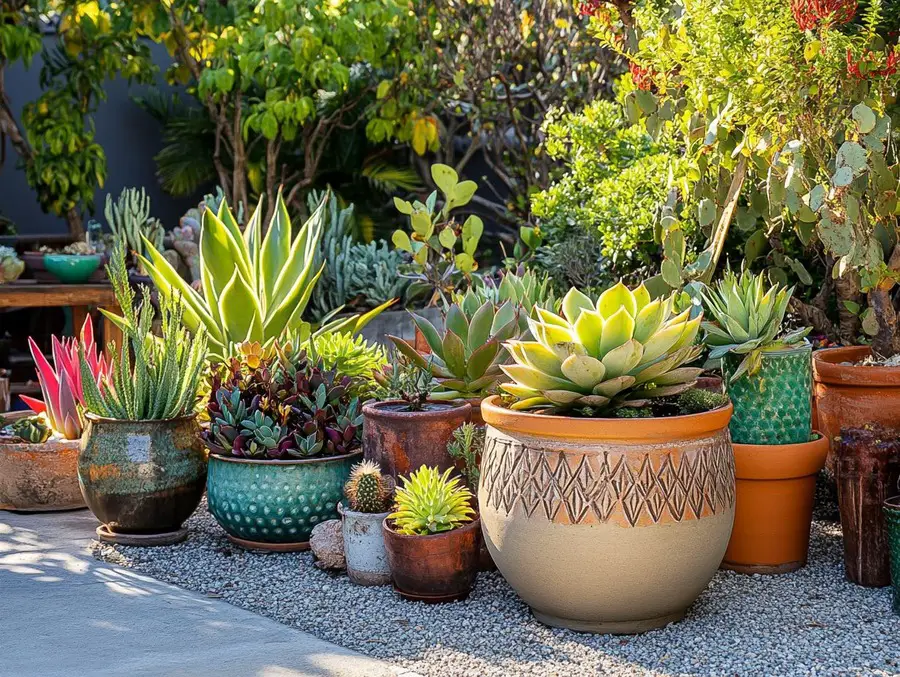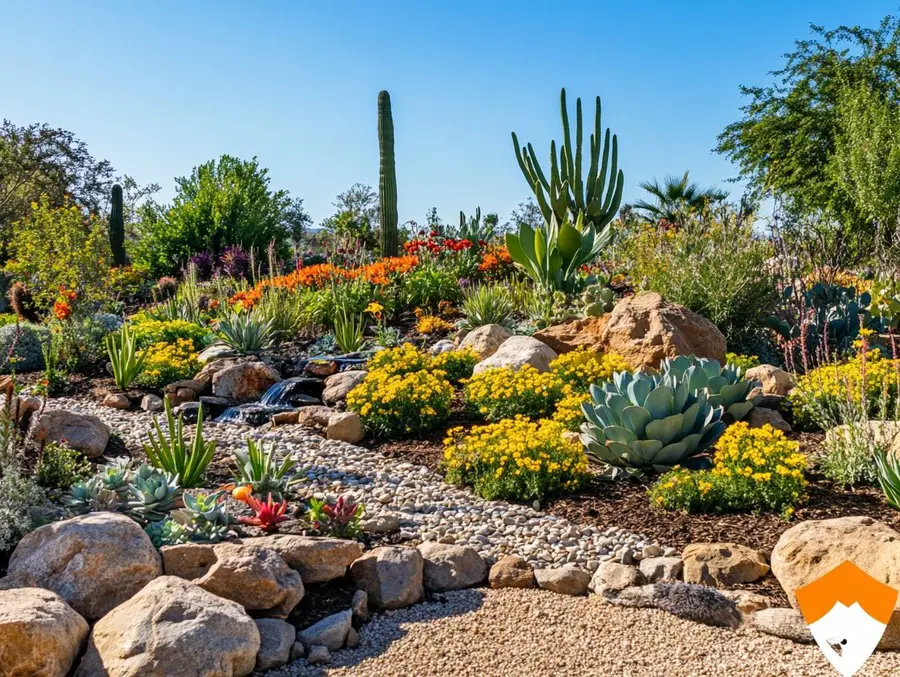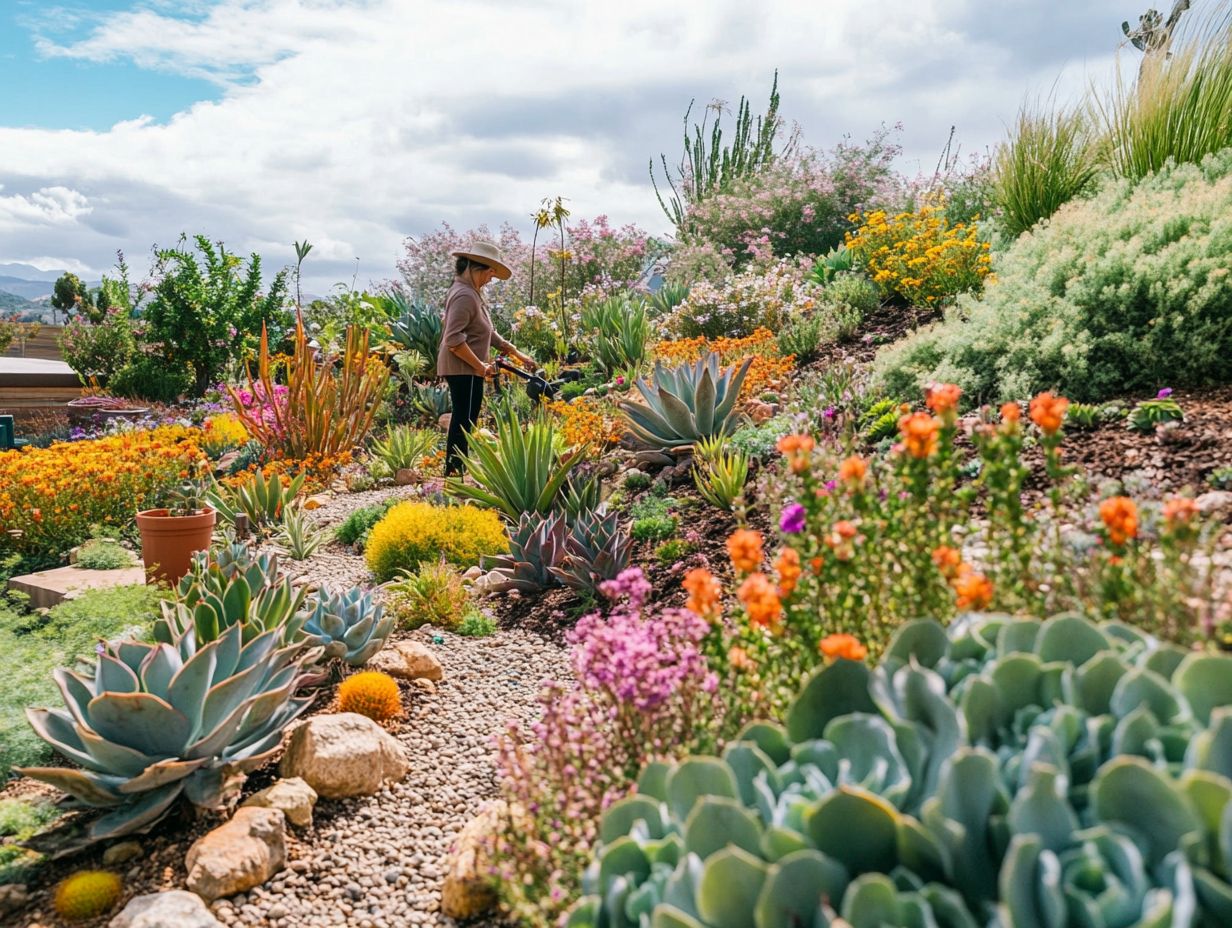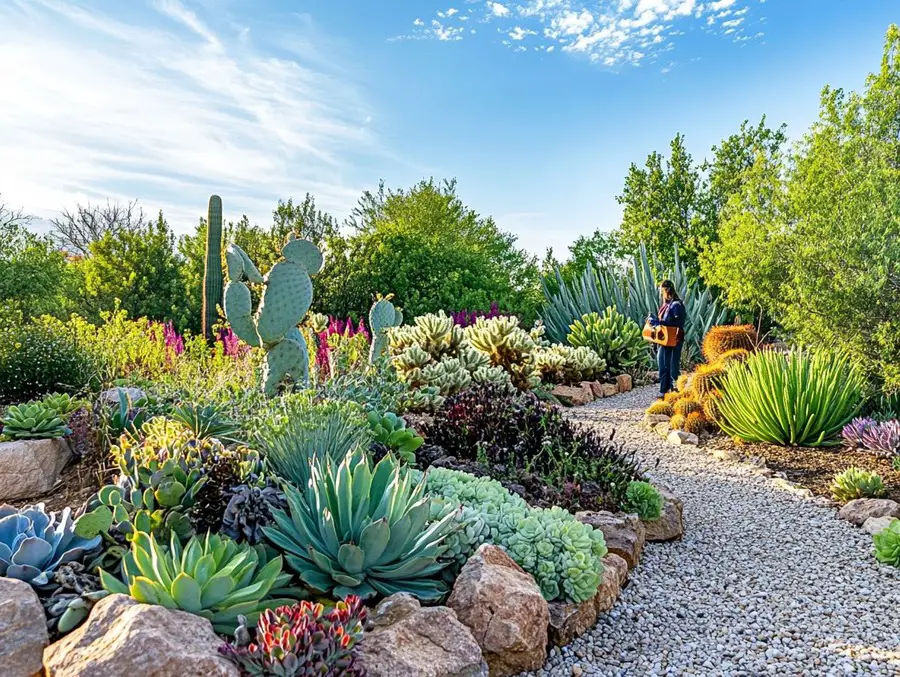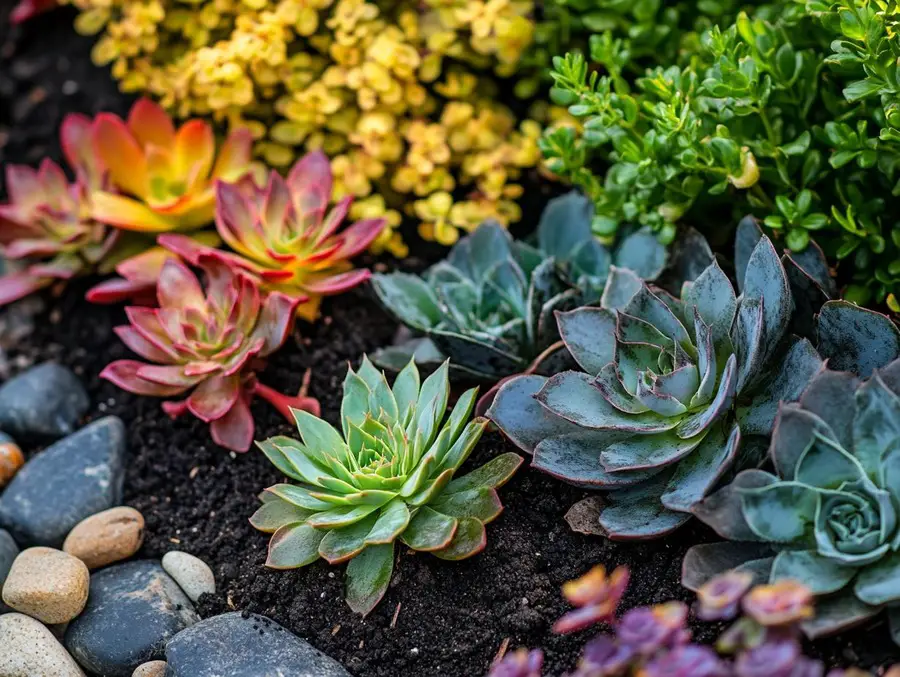We use affiliate links. If you purchase something using one of these links, we may receive compensation or commission.
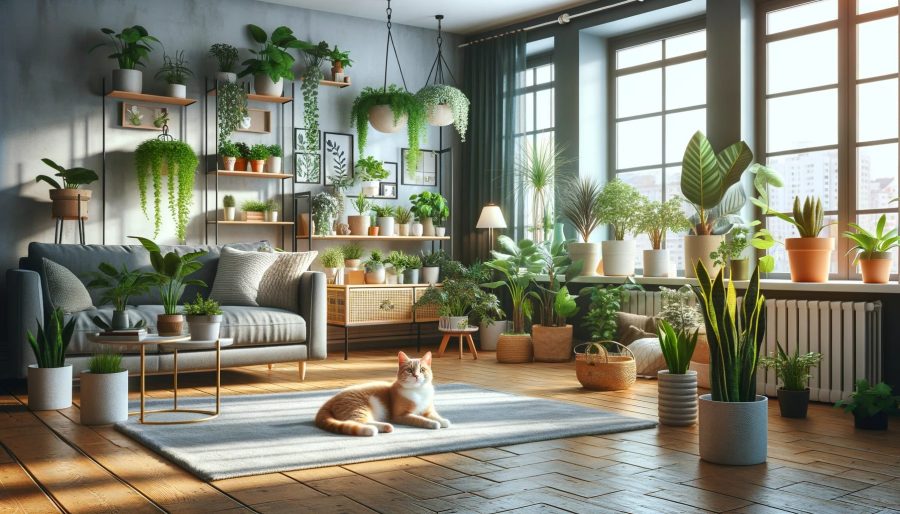
Discover the best pet-safe plants for apartments! Our guide offers easy tips to green up your space while keeping your furry friends happy.
Key Takeaways:
- The best pet-safe plants for apartments include succulents, nerve plants, polka dot plants, banana trees, bamboo trees, Boston ferns, Swedish ivy, parlor palms, and African violets.
- Ideal for apartment life, they thrive in various light conditions and are safe for pets.
- These plants are not only non-toxic but also enhance your space with their unique beauty, making them perfect for pet owners who love indoor gardening.
Are you on the hunt for the best pet-safe plants for apartments? Look no further!
We’ve got the scoop on which plants will jazz up your space without worrying about your four-legged friends.
Dive into our guide for a pet-friendly, plant-filled paradise right in your apartment.
Best Pet-Safe Plants for Apartments
Apartment living brings unique challenges, especially when it comes to ensuring the safety of our furry companions.
In this guide, we dive into the world of pet-safe plants that are perfect for apartment dwellers.
Whether you’re dealing with low light conditions or seeking large, statement-making greenery, you’ll find options here that promise to keep your pets safe while enhancing your living space.
Discover the ideal plants that blend beauty, practicality, and pet-friendliness for the perfect apartment oasis.
Why Pet-Safe Plants are Essential in Apartments
In the cozy confines of an apartment, every choice matters, particularly when it involves the well-being of our pets.
Understanding why pet-safe plants are crucial in these spaces is the first step toward creating a harmonious and safe environment for our animal companions.
The Importance of Pet Safety in Smaller Living Spaces
In the compact environment of an apartment, the proximity between pets and plants is inevitably closer, making the selection of pet-safe plants a crucial aspect of apartment living.
This heightened proximity increases the likelihood of pets coming into contact with, or even ingesting, houseplants.
It’s not just about the space; it’s about ensuring that every inch of that space is safe for our beloved animal companions.
Increased Interaction Between Pets and Plants in Limited Spaces
- In smaller living spaces, pets often have unrestricted access to all areas, including where plants are placed.
- This close contact increases the chances of pets nibbling on leaves or digging in the soil, behaviors that are natural but could be harmful if the plants are toxic.
- Pets, especially cats and dogs, are curious by nature and often use their senses to explore their environment.
- This natural curiosity can lead to them chewing or pawing at plants, which can be dangerous if the plants contain harmful toxins.
Risks of Toxic Plants in Close Quarters
- Many common houseplants, while beautiful, contain toxins that can be harmful or even lethal to pets if ingested.
- Symptoms of plant toxicity in pets can range from mild irritation to severe health complications, depending on the plant and the amount ingested.
- The confined space of apartments means that harmful plants are always within reach of pets, increasing the risk of accidental ingestion.
- Pet owners must be aware of the toxicity of their plants and ensure that all plants within the home are non-toxic to their pets.
- Proactive measures, such as researching pet-safe plants and understanding the specific needs and behaviors of your pets, can greatly reduce the risk of accidental poisoning.
- This proactive approach is not only vital for the health and safety of pets but also contributes to a more harmonious and stress-free living environment for both pets and their owners.
Here is a link to the ASPCA Toxic and Non-toxic plants. When in doubt check it out.
In summary, understanding and mitigating the risks associated with keeping plants in smaller living spaces is essential for the health and well-being of pets.
By choosing pet-safe plants and being mindful of plant placement, pet owners can create a beautiful, green living space that is safe and enjoyable for their furry family members.
Impact of Limited Space on Plant Choices
The constraints of apartment living often necessitate a careful selection of plants that not only fit into smaller spaces physically but also complement the aesthetics of the home.
This decision-making process involves considering both the spatial limitations and the safety of the pets who share the environment.
Challenges of Selecting Plants for Small Spaces
- One of the primary challenges in smaller apartments is finding plants that don’t overwhelm the space.
- It’s essential to choose plants that are proportionate to the room’s size to avoid a cluttered or cramped appearance.
- For example, larger plants might be more suited to corners or alongside furniture, while smaller plants can adorn windowsills and shelves.
- Another aspect is the aesthetic harmony of the plant with the existing decor.
- In compact spaces, every item, including plants, plays a significant role in the overall look and feel of the home.
- The goal is to select plants that enhance the living space’s ambiance, complementing color schemes and design elements.
Importance of Non-Toxic Plants in Pet-Friendly Homes
In an apartment shared with pets, the safety of the plants becomes as important as their aesthetic appeal.
Non-toxic plants are a must to ensure that pets remain safe even if they come into contact with or ingest the plants.
Pet owners need to be vigilant about plant selection, as many popular houseplants can be harmful to pets.
- The need for non-toxic plants also influences the variety of plants one can safely keep in an apartment with pets.
- This limitation, however, can be seen as an opportunity to explore a diverse range of beautiful, pet-safe plants that perhaps wouldn’t have been considered otherwise.
- Ensuring that plants coexist safely with pets also involves considering the placement of plants.
- Strategically placing plants out of pets’ reach or choosing plants that are less likely to attract the curiosity of pets can further reduce any risks.
Ultimately, the impact of limited space on plant choices in an apartment is twofold: it requires thoughtful consideration of the physical and aesthetic fit of the plants and necessitates a focus on safety for the pet inhabitants.
By balancing these factors, apartment dwellers can create a harmonious, beautiful, and safe living environment for themselves and their pets.
Top Pet-Safe Plants for Low-Light Apartments
Navigating the world of indoor plants can be tricky, especially when dealing with low-light apartments.
But don’t worry. There’s a variety of pet-safe plants that not only survive but thrive in dimly lit spaces.
Let’s delve into the best plant options that keep your space lush and your pets out of harm’s way, even when sunshine is a rare guest.
Best Low-Light Pet Safe Plants
In the quest for pet-safe, low-light-friendly flora, several plants stand out for their resilience and non-toxicity. Here’s a list of top contenders:
Spider Plant (Chlorophytum comosum): A champion of low-light conditions, the Spider Plant is known for its air-purifying qualities and easy care. Its arching leaves and baby plantlets make it a visually appealing choice.
ZZ Plant (Zamioculcas zamiifolia): With its waxy, dark green leaves, the ZZ Plant can endure low light while requiring minimal watering. It’s a perfect match for busy pet owners.
Boston Fern (Nephrolepis exaltata): This lush, feathery fern is a natural humidifier and a great choice for adding greenery to shady corners. Ensure it stays moist and enjoys the high humidity.
Peace Lily (Spathiphyllum): Known for its striking white blooms and dark leaves, the Peace Lily can brighten up a low-light space. It’s also known for its air-purifying capabilities.
Calathea: With its unique patterned leaves, Calathea thrives in low light and is safe for pets. It prefers humidity and consistent soil moisture.
Ensuring Plant Health in Low Light
To keep these plants flourishing, consider these tips:
- Maximize Available Light: Place your plants in areas where they can receive the most available light, like near north or east-facing windows. Sheer curtains can help diffuse direct sunlight without depriving them of light.
- Rotate Regularly: Rotating your plants every few weeks ensures that all sides receive equal light, promoting even growth.
- Artificial Lighting: If natural light is insufficient, consider supplementing with grow lights. They can provide the necessary spectrum of light for plant growth.
- Aesthetic and Practical Placement: While arranging plants, consider both their light needs and how they complement your space. Grouping plants can create a mini indoor garden effect, adding to your apartment’s aesthetic appeal.
In conclusion, even in low-light apartments, you can create a lush, pet-safe indoor garden.
With the right plants and care, your green sanctuary will thrive, making both you and your pets happy.
Best Large Pet Safe Plants for Apartments
Who says you can’t have grand, green giants in your apartment?
Large houseplants can dramatically transform your living space, bringing a piece of the outdoors inside.
The key is choosing large plants that are pet-friendly and fit well in your apartment.
Let’s explore some spectacular options that allow you to go big on greenery without compromising your pet’s safety or your living space’s aesthetic.
Selecting Large Plants for Small Spaces
When it comes to incorporating larger plants in an apartment, the choice goes beyond just the size. Here’s what to consider:
- Space Proportionality: Opt for plants that complement the space rather than dominate it. Consider the plant’s growth pattern and potential size at maturity.
- Vertical Growth: Some plants grow more upwards than outwards, making them ideal for tight spaces. These varieties can add height and structure without taking up too much floor area.
- Container Size: Remember, the pot size contributes to the overall space the plant occupies. Choose sleek and space-efficient containers that provide enough room for growth.
Top Large Pet-Safe Plant Recommendations
- Areca Palm (Dypsis lutescens): This feathery palm can grow quite tall while staying relatively narrow, making it perfect for sunny corners. It’s also known for its air-purifying qualities.
- Kentia Palm (Howea forsteriana): Elegant and with a slow growth rate, this palm is ideal for adding vertical greenery without needing frequent repotting.
- Rubber Plant (Ficus elastica): With its glossy, broad leaves, the Rubber Plant is a stunning addition. It grows upwards and can be pruned to manage its size.
- Bird of Paradise (Strelitzia reginae): Known for its large, tropical leaves, this plant can bring an exotic flair to your apartment. It requires bright light and occasional pruning.
- Money Tree (Pachira aquatica): Believed to bring good luck, the Money Tree has a braided trunk and lush foliage. It’s adaptable to various light conditions and doesn’t grow too wide.
Ensuring Large Plants Thrive in Apartments
- Light and Water: Large plants often have greater light and water needs. Ensure they are positioned near light sources and stick to a consistent watering schedule.
- Pruning and Maintenance: Regular pruning can help manage size and shape, making these plants more suitable for apartments.
- Plant Mobility: Consider using stands with casters for easier mobility, especially useful for cleaning and adjusting the plant’s position relative to light.
By choosing the right large plants, you can enjoy the lushness and benefits of indoor greenery in your apartment while keeping your pets safe and happy.
Maximizing Space: Creative Ways to Arrange Pet Safe Plants in Apartments
When square footage is at a premium, arranging plants in your apartment becomes an art form.
It’s all about maximizing space without sacrificing style or your pets’ well-being.
This section will guide you through creative and effective ways to display your pet-safe plants, transforming your apartment into a lush, green haven that’s both beautiful and functional.
Effective Plant Arrangement Strategies
Utilizing every available inch is key in small spaces. Here’s how you can do it:
- Vertical Gardening: Think upwards! Utilize vertical space with hanging plants and wall-mounted planters. This approach not only saves floor space but also adds an eye-catching dimension to your decor. Plants like Pothos or Spider Plants are great for hanging baskets.
- Wall-Mounted Planters: Create a living wall with wall-mounted planters. They are great for small plants and can form an attractive green focal point in your living space.
- Plant Stands and Shelves: Elevate your plants on stands or multi-tiered shelves. This not only creates levels of greenery but also keeps plants out of pets’ reach. Shelves near windows are perfect for plants that crave more sunlight.
- Window Sill Gardening: Utilize your window sills for small, sun-loving plants. It’s a great way to ensure they get enough light without taking up extra space.
Blending Aesthetics and Practicality
A harmonious balance between beauty and functionality is essential:
- Decor-Enhancing Plants: Choose plants that complement your interior design. Consider the color and texture of the leaves, the pot style, and how they fit with your overall aesthetic.
- Pet Safety Considerations: Ensure plants are placed in locations where they won’t be easily knocked over by pets. Use sturdy pots and consider pet-repellent sprays for plants that might attract curious nibblers.
- Balancing Light and Beauty: While considering the visual appeal, don’t forget about the plant’s light needs. Arrange plants in a way that they receive adequate light, which might mean rotating them regularly or placing them strategically near light sources.
With these tips, you can create a stunning and pet-safe plant display in your apartment, making the most of limited space while maintaining a harmonious and attractive living environment.
Plant Care and Pet Safety Tips for Apartment Dwellers
Caring for plants in an apartment can be a rewarding experience, but it comes with its own set of challenges, especially when pets are part of your household.
This section aims to guide you through the essentials of plant maintenance while also providing strategies to keep both your plants and pets safe and happy in your shared space.
Essential Plant Maintenance in Apartments
Creating a thriving plant environment in an apartment requires attention to a few key aspects:
- Consistent Watering: Understand the watering needs of each plant. Over-watering is a common mistake, especially in apartments where air circulation may be limited. Use pots with drainage holes and trays to avoid excess water sitting at the roots.
- Adequate Sunlight: Ensure your plants receive the right amount of light. In apartments, natural light can be scarce, so placing plants near windows or using grow lights can help. Rotate your plants regularly for even exposure to light.
- Soil Maintenance: Use the appropriate soil mix for each plant type. In confined spaces, the quality of the soil is crucial for plant health. Consider repotting plants annually or when they outgrow their current pots.
- Humidity and Temperature: Apartments can have varying humidity levels and temperatures. Plants like ferns and orchids thrive in higher humidity, while cacti and succulents prefer drier air. Use humidifiers or place water trays near plants to adjust the humidity.
Pet-proofing Your Plant Collection
Keeping plants safe from pets, and vice versa, is a vital part of plant care in a pet-inclusive home:
- Strategic Placement: Place plants out of reach of pets. Elevated shelves, hanging planters, and tall stands can keep plants safe from curious pets.
- Use of Barriers: Sometimes, physical barriers like decorative fences or plant cages can be effective in keeping pets away from plants.
- Natural Deterrents: Some pets are deterred by certain smells. Natural sprays made from diluted vinegar or citrus can keep pets away without harming the plant.
- Pet Training: Consistently training your pets to stay away from plants can be effective. Use positive reinforcement techniques to teach them that plants are not toys or snacks.
By combining thoughtful plant care with pet-safety strategies, you can ensure a harmonious coexistence of your greenery and furry friends, making your apartment a lush, safe haven for all.
Pet Safe Plants in Apartments FAQs
When it comes to pet-safe plants in apartments, numerous questions arise.
This FAQ section is designed to address some of the most common concerns and questions apartment dwellers may have regarding maintaining a pet-safe, plant-friendly environment.
These answers aim to provide clarity and instill confidence in those looking to cultivate a safe and green living space in their apartments.
Q: How can I identify pet-safe plants suitable for low light in my apartment?
A: Identifying pet-safe, low-light plants involves a bit of research. Look for plants that are known for their tolerance to low light conditions and are non-toxic to pets.
Some great examples include the Spider Plant (Chlorophytum comosum), which thrives in indirect sunlight and is safe for pets, and the Boston Fern (Nephrolepis exaltata), which prefers shaded areas and is also non-toxic.
Always cross-reference with a reliable source like the ASPCA’s list of non-toxic plants to ensure they’re safe for your furry friends.
Q: What should I do if my pet ingests a potentially harmful plant?
A: If your pet ingests a potentially harmful plant, immediate action is crucial.
First, try to identify the plant ingested and check if it’s toxic to pets. If it is, or if you’re unsure, contact your veterinarian or a pet poison helpline immediately.
Be prepared to provide information about the plant and the amount ingested.
In the meantime, do not induce vomiting unless instructed by a professional.
Keeping a first aid kit and a list of emergency contacts handy is also a good practice for such situations.
Q: Any tips for beginners starting their pet-safe plant collection in an apartment?
A: For beginners, starting with easy-to-care-for pet-safe plants is key.
Choose plants that require minimal maintenance and are known to be non-toxic to pets.
Start with a small number of plants to ensure you can manage their care.
Good options include the Cast Iron Plant (Aspidistra elatior) and the Parlor Palm (Chamaedorea elegans), both of which are low-maintenance and safe for pets.
Additionally, educate yourself about each plant’s specific needs in terms of light, water, and soil, and consider the layout of your apartment to ensure each plant receives adequate care.
Conclusion: Cultivating a Pet-Safe Green Haven in Your Apartment
As we reach the end of our exploration into pet-safe plants for apartments, it’s clear that creating a green haven that is safe for our pets is both feasible and rewarding.
This concluding section reflects on the key insights gained and looks forward to a harmonious coexistence of pets and plants in apartment spaces.
Embracing a Pet-Friendly Green Lifestyle
Incorporating pet-safe plants into apartment living brings a multitude of benefits that enhance both your and your pet’s quality of life.
Plants not only purify the air and improve the overall ambiance of your home but also provide a sense of connection to nature, which can be especially valuable in urban settings.
For pets, a home with non-toxic plants ensures their safety and well-being. The presence of greenery can also positively stimulate their senses, akin to their natural outdoor environment.
Adopting a green lifestyle with pets in mind requires a willingness to learn and adapt.
Understanding the specific needs of your plants, as well as the behaviors and safety of your pets, is an ongoing process.
As each plant has unique care requirements, and pets have individual temperaments, finding the balance between the two is key.
Regularly researching and adapting to the needs of your living space, plants, and pets will lead to a harmonious and thriving environment.
Final Thoughts and Future Considerations
The world of pet-safe plants is ever-evolving, with new varieties and care techniques continually emerging.
Staying informed about the latest developments in pet-friendly horticulture can open up new possibilities for enhancing your living space.
Advances in plant care technology, such as self-watering systems or grow lights, offer exciting opportunities to cultivate a wider variety of plants in apartments.
Future considerations for pet-friendly apartment living should include keeping an eye on the latest research about plant toxicity, as new findings can sometimes change the status of certain plants.
Additionally, exploring innovative ways to integrate greenery into your living space, such as through vertical gardens or hydroponic systems, can maximize your space’s potential.
In conclusion, embracing a pet-friendly green lifestyle in an apartment setting is a rewarding endeavor that benefits both you and your pets.
By continuously learning and staying abreast of new developments, you can create a living space that is both a green sanctuary and a safe haven for your furry companions.
Read about Fittonia aka Nerve Plant another great non-toxic plant for your home.
Learn more: Apartment Gardening Comprehensive Guide for Beginners
Related Content
Visit my Amazon Influencer Page for videos and gardening products Grow Your Own Garden















